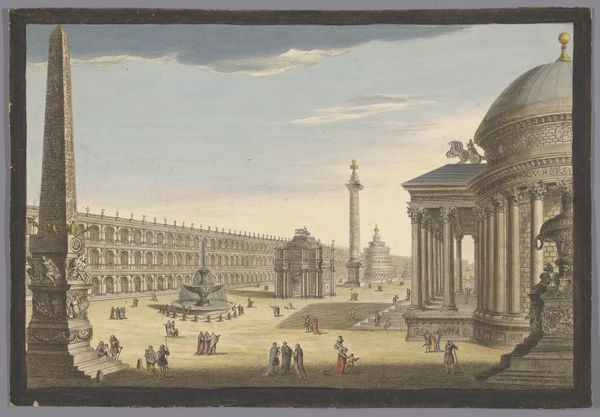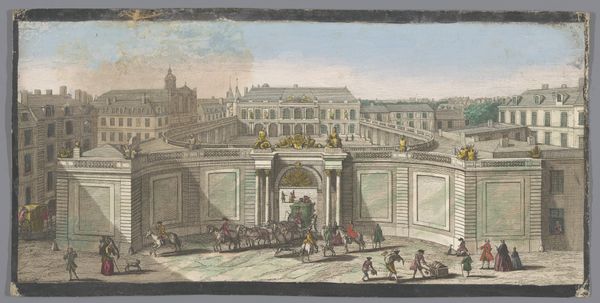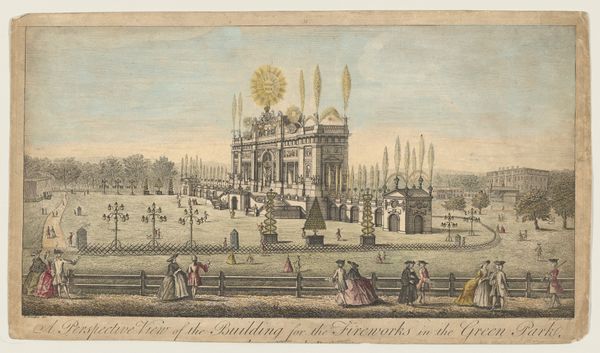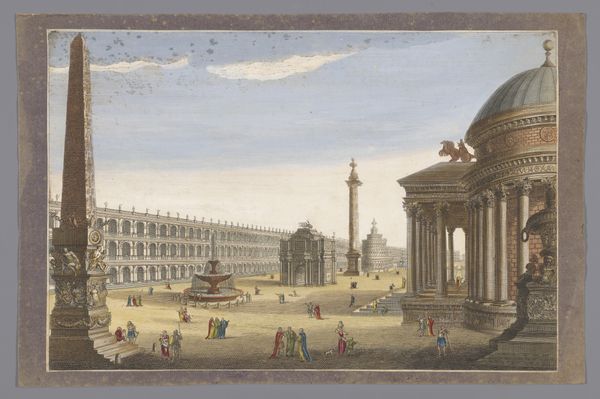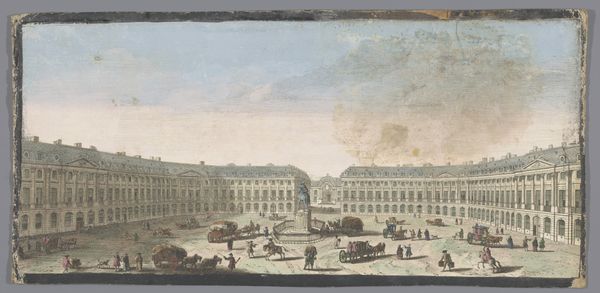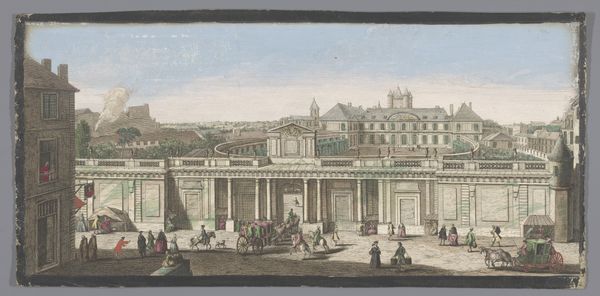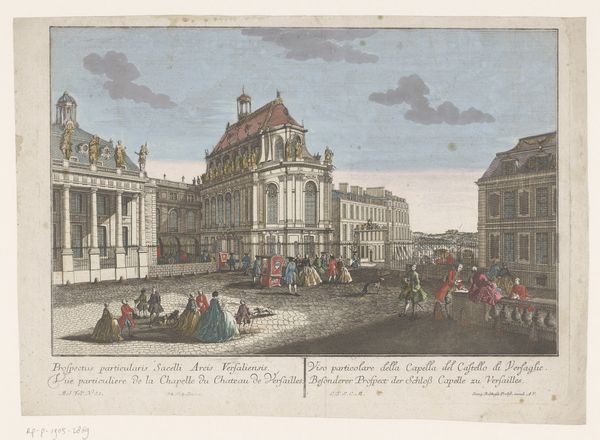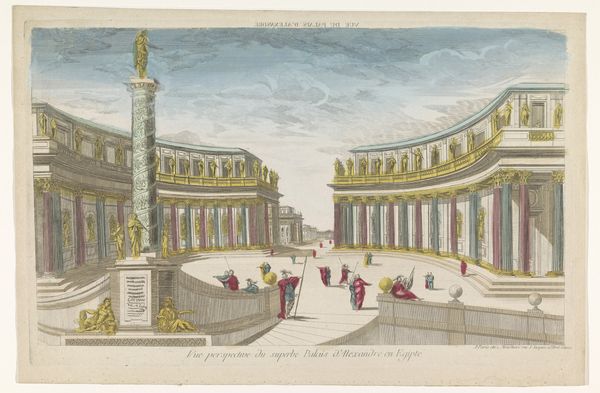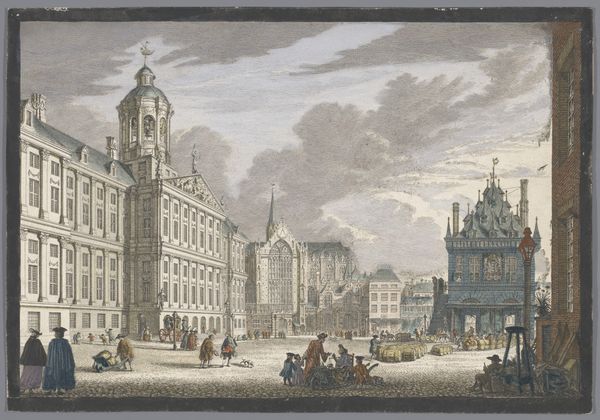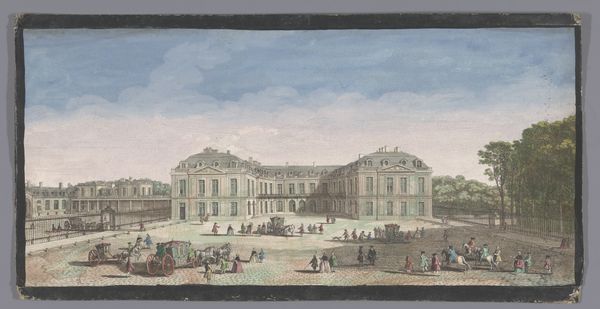
Gezicht op een obelisk, een triomfboog, een zuil en andere bouwwerken te Rome 1745 - 1775
0:00
0:00
drawing, print, etching, watercolor
#
drawing
#
water colours
#
baroque
# print
#
etching
#
landscape
#
watercolor
#
coloured pencil
#
cityscape
#
watercolor
Dimensions: height 292 mm, width 450 mm
Copyright: Rijks Museum: Open Domain
Editor: So, here we have "View of an Obelisk, a Triumphal Arch, a Column and Other Buildings in Rome," made between 1745 and 1775 by Jean-François Daumont, using etching, watercolor, and coloured pencil. It really strikes me as a romanticized view, almost dreamlike. What do you see in this piece? Curator: I see a work deeply embedded in the economics of image production. Daumont likely wasn’t just creating "art," but supplying a market hungry for picturesque views of Rome. The etching process itself—a reproducible medium—speaks to mass consumption. Consider the paper, the inks: who controlled those resources, and how did that shape the image we see? Editor: That’s a different perspective! I was thinking more about the artistic intention… Curator: And artistic intention isn't formed in a vacuum. Think about the labour involved – the etcher's skill, the colourist's application of watercolors. They were craftsmen, contributing to a commercial venture. How does understanding their role shift our view of the ‘artist’? Was Daumont solely responsible for its design, or was it collaborative? Editor: So, it’s not just about Daumont’s artistic vision, but more about how it all came together as a commercial object? The availability of materials like colored pencils, for instance, would have influenced the aesthetic… Curator: Precisely! The ‘romantic’ feel you mentioned, is that driven by artistic vision, or is it simply a byproduct of the printmaking technologies available and a marketing strategy to appeal to wealthy tourists on the Grand Tour? Editor: That makes me rethink the entire scene. It isn't just Rome; it’s a product of its time, materially and economically. Curator: Exactly! We can admire the cityscape but also interrogate the system that brought this image to life. Editor: I hadn’t considered how the means of production are essential for understanding art history. Thanks!
Comments
No comments
Be the first to comment and join the conversation on the ultimate creative platform.
